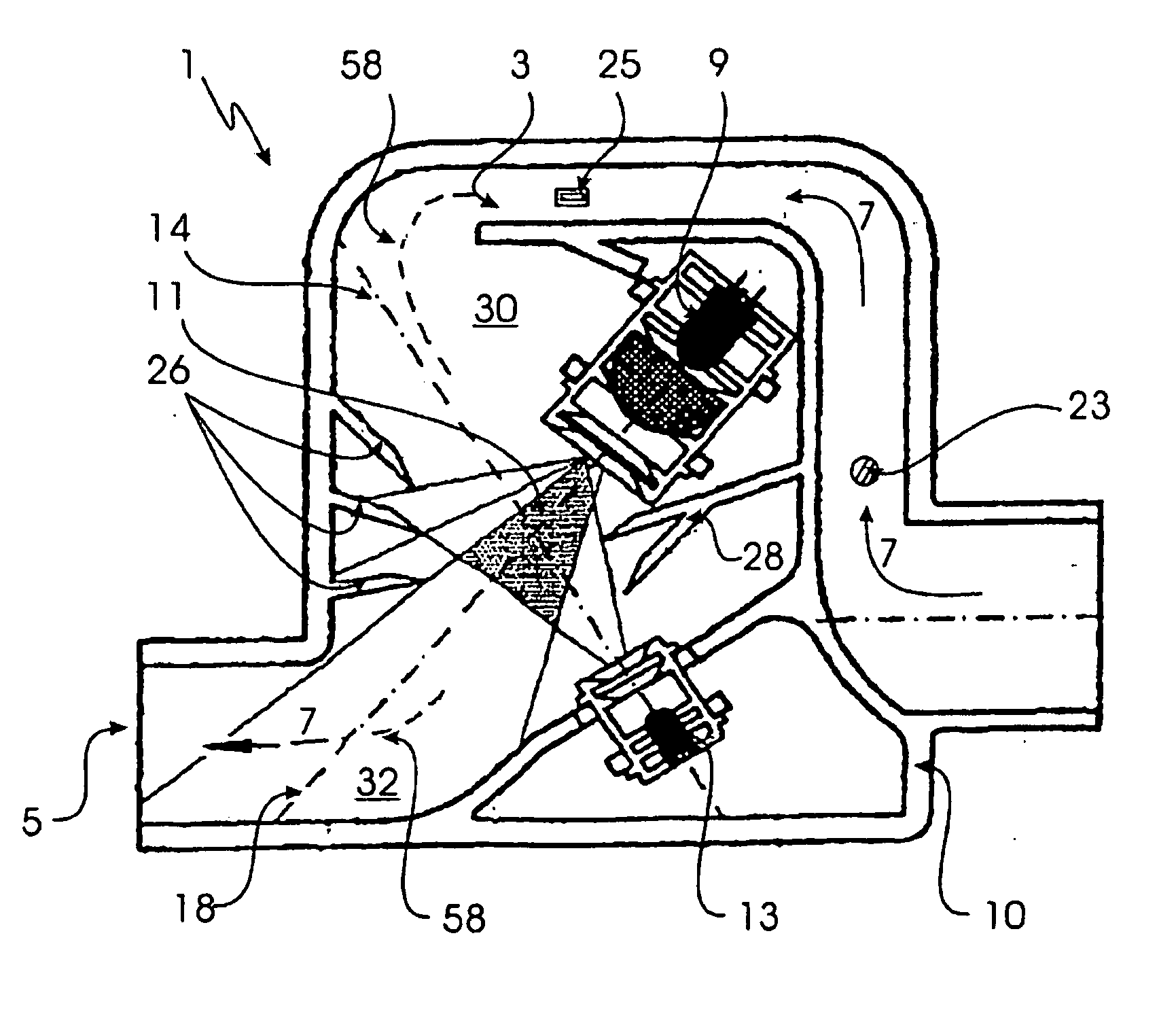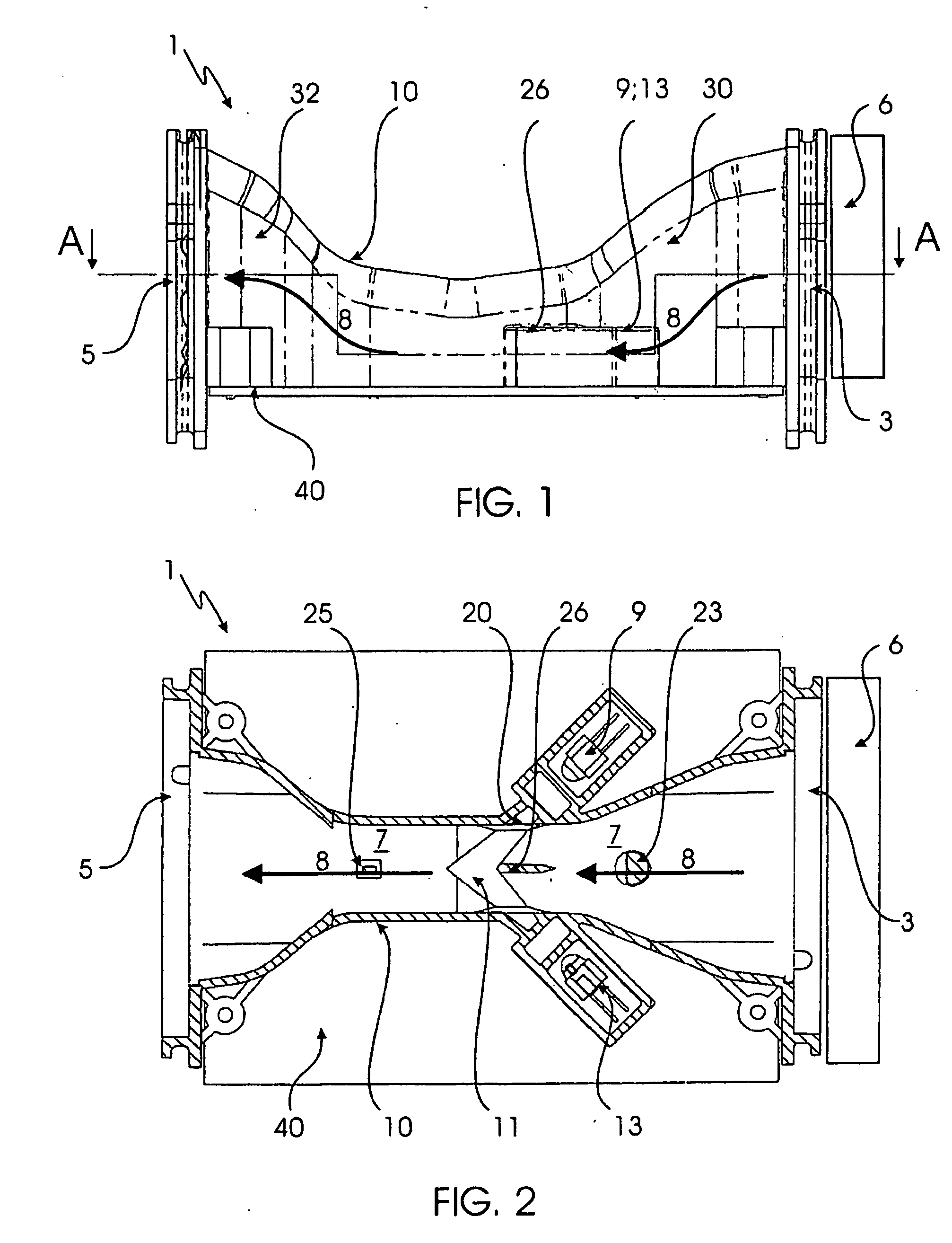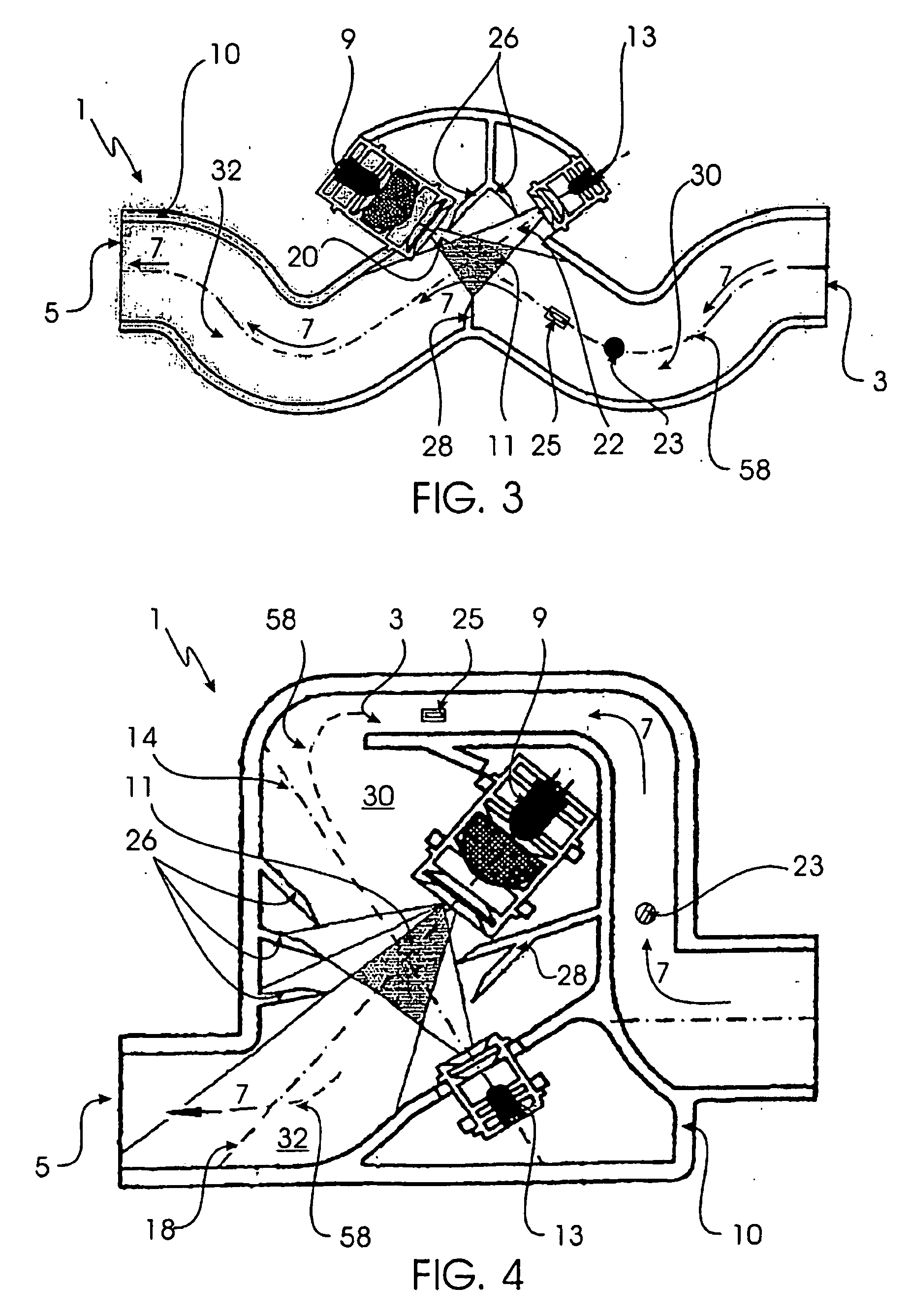Method for evaluation of a scattered light signal and scattered light detector used for carrying out said method
a technology of scattered light and detector, which is applied in the field of method for evaluating a scattered light signal and a scattered light detector used for carrying out said method, can solve the problems of increasing the distance between the respective light pulses, increasing the dead area of the detector, and disproportionately shortening the operating life. the effect of reducing the number of detectors
- Summary
- Abstract
- Description
- Claims
- Application Information
AI Technical Summary
Benefits of technology
Problems solved by technology
Method used
Image
Examples
first embodiment
[0044]FIG. 2 shows the first embodiment from FIG. 1 in a sectional top plan view. The orientation to the section corresponds to the A-A intersecting line depicted in FIG. 1. As shown, air, which flows through scattered light detector 1 from inlet opening 3 to outlet opening 5,passes the scattered light center 11. Any fine particles present in air flow 8 thereby reflect the light emitted by light source 9, in this case an LED, onto scattered light receiver 13, which then generates a detection signal once a previously-defined threshold is exceeded. An air flow sensor 25 and a temperature sensor 23 are additionally provided in flow path 7 of the scattered light detector 1. Air flow sensor 25 serves in the assessing of whether a more continuous or some otherwise specific air flow 8 is flowing through scattered light detector 1. In the event of air flow fluctuations, it is, for example, possible to issue a corresponding alarm signal. Temperature sensor 23 monitors the temperature in air ...
second embodiment
[0046] The second embodiment, shown in FIG. 3, includes screens 26 and 28, which prevent the reflection of the light emitted from the light source 9 directly onto the scattered light receiver 13. A temperature sensor 23 and an air flow sensor 25 are likewise arranged on the center line 58 of flow path 7 to collect the detection-relevant calibration and monitoring data.
third embodiment
[0047] As in the embodiments depicted before, the third embodiment depicted in FIG. 4 of a scattered light detector also exhibits light traps 30 and 32. The center axes 18 and 14 of the light source 9 and the receiver 13, respectively, are aligned such that they run parallel to or along the center line 58 of flow path 7 for a certain segment thereof (e.g., to the two bendings 30 and 32 of flow path 7). In this embodiment as well, screens 26 and 28 are provided to prevent detection of false values. An air flow sensor 25 and a temperature sensor 23 are likewise arranged in the flow channel formed near inlet opening 3. Thus, the temperature and flow rate of an air flow 8 flowing through scattered light detector 1 is checked before it reaches the scattered light center 11.
[0048] Several processing operations are used in the scattered light detectors 1, as described above. In more detail, the scattered light signal received by scattered light receiver 13 runs through a calibration operat...
PUM
| Property | Measurement | Unit |
|---|---|---|
| period of time | aaaaa | aaaaa |
| temperature | aaaaa | aaaaa |
| integration time | aaaaa | aaaaa |
Abstract
Description
Claims
Application Information
 Login to View More
Login to View More - R&D
- Intellectual Property
- Life Sciences
- Materials
- Tech Scout
- Unparalleled Data Quality
- Higher Quality Content
- 60% Fewer Hallucinations
Browse by: Latest US Patents, China's latest patents, Technical Efficacy Thesaurus, Application Domain, Technology Topic, Popular Technical Reports.
© 2025 PatSnap. All rights reserved.Legal|Privacy policy|Modern Slavery Act Transparency Statement|Sitemap|About US| Contact US: help@patsnap.com



